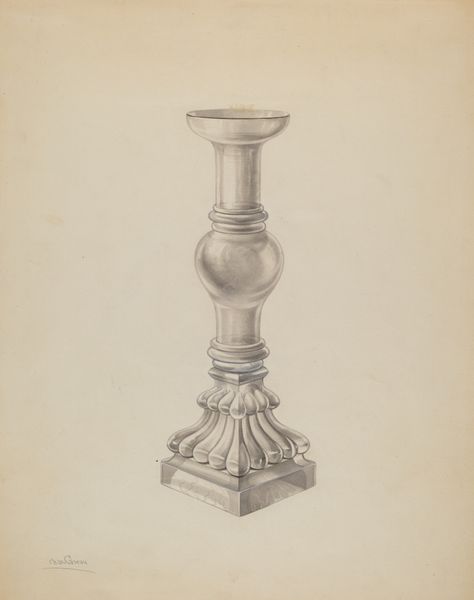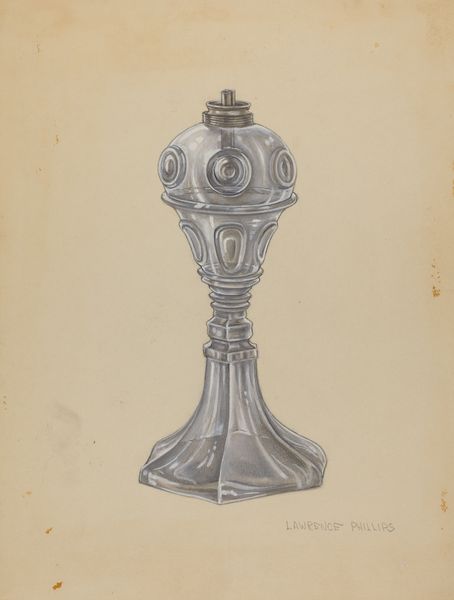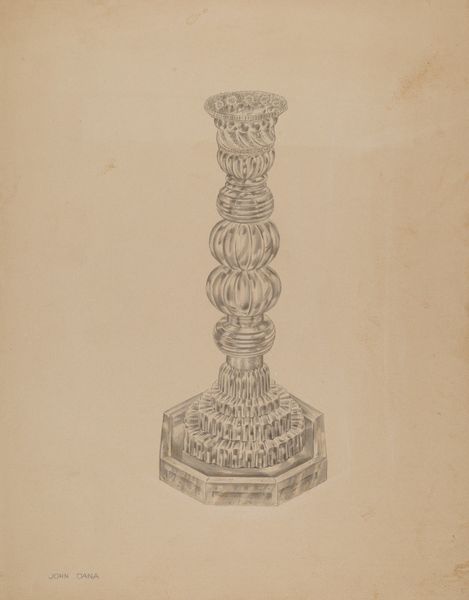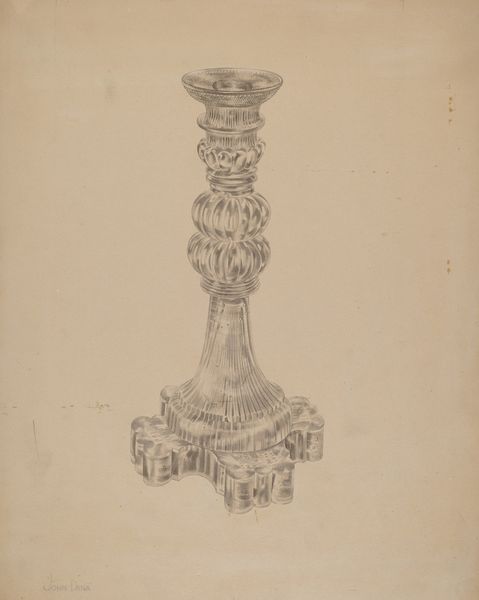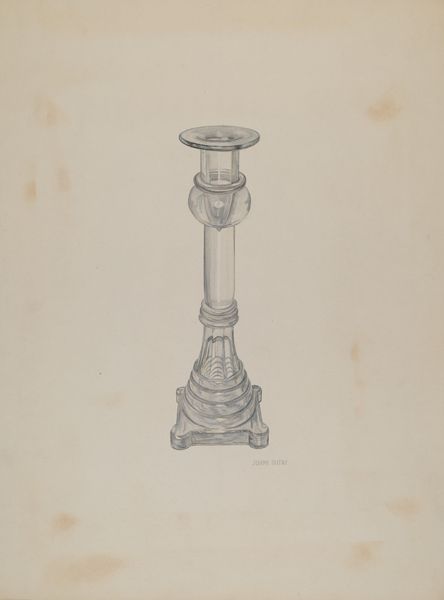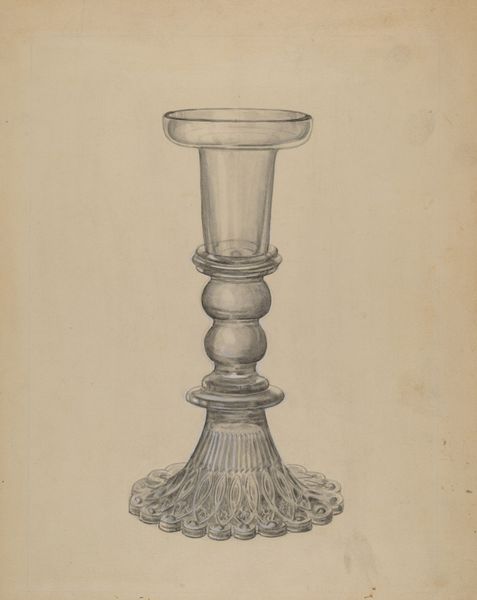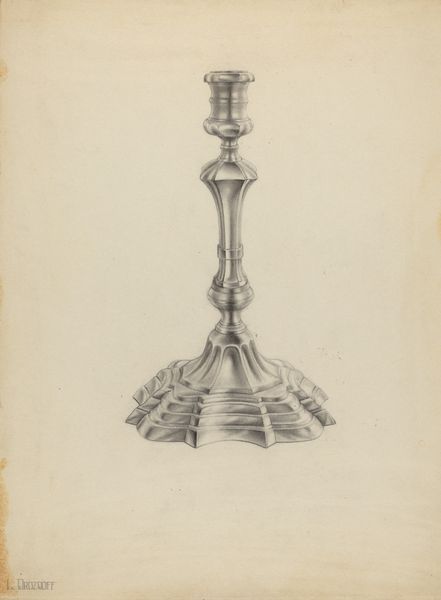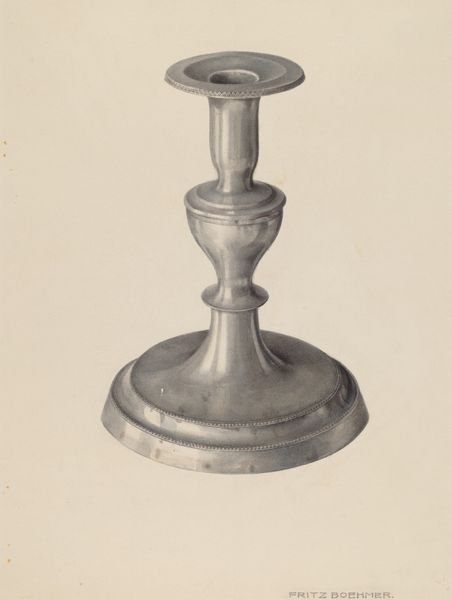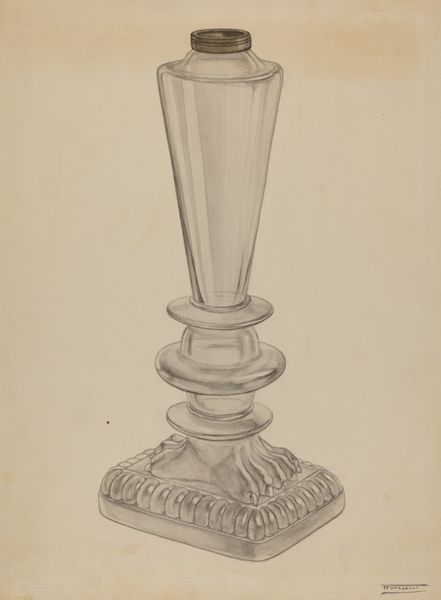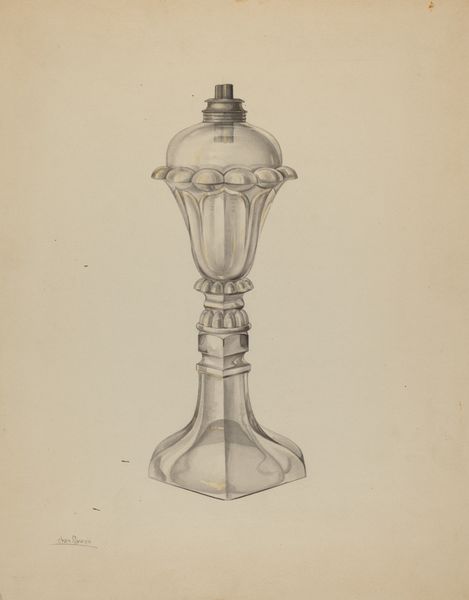
drawing, watercolor
#
drawing
#
watercolor
#
watercolour illustration
#
academic-art
#
realism
Dimensions: overall: 35.5 x 26.7 cm (14 x 10 1/2 in.) Original IAD Object: 8 1/2" high; 4" in diameter
Copyright: National Gallery of Art: CC0 1.0
Curator: Here we have Frank M. Keane’s "Silver Candlestick," dating from 1935 to 1942, rendered in watercolor and drawing. What's your initial take? Editor: Austere elegance comes to mind. The silvery grey against the blank background is rather somber, actually. Makes you think about absence, doesn’t it? Curator: It does evoke a certain quietness. I’m intrigued by the way Keane used such delicate techniques – watercolor, drawing – to capture something so materially solid as silver. What readings can we bring forth when thinking about gender and artistry here? Editor: The choice of depicting a domestic object such as this resonates within a history where still-life painting was seen, especially where women artists were concerned, as 'lesser'. But equally, light cast from the candlestick is crucial to notions of domesticity and family within highly gendered narratives across modern European painting. The symbolism then becomes interesting; how is the very 'ordinariness' and function of the piece used here to subvert typical readings? Curator: That really complicates any simple reading of it as *just* a pretty drawing. It invites us to look at how mundane objects accumulate layers of social meaning. Do you see that in the execution as well, perhaps in the contrast between precise linework and washier areas? Editor: Absolutely, and there's something subtly rebellious about how he insists on detail—every tiny indentation on the base is visible—within this rather muted, unassuming palette. Curator: So we see labor made visible, and yet contained, controlled almost, by the precision. It hints at underlying tensions beneath the calm surface of the everyday. The almost obsessive realism almost makes it feel surreal in its focus. Editor: It brings me back to ideas of display and consumption in the mid-20th century, especially as luxury was becoming ever more present but ordinary domestic space wasn’t easily accessible or equally enjoyed. Even this, then, signals inequalities present then and, I believe, unfortunately, continuing into the present. Curator: Well, that definitely adds new weight to what I first thought was just a quiet little painting. Thanks for sharing that perspective! Editor: Thank you—spotlighting those underlying power dynamics embedded within such seemingly simple images—it's always an uncovering.
Comments
No comments
Be the first to comment and join the conversation on the ultimate creative platform.

